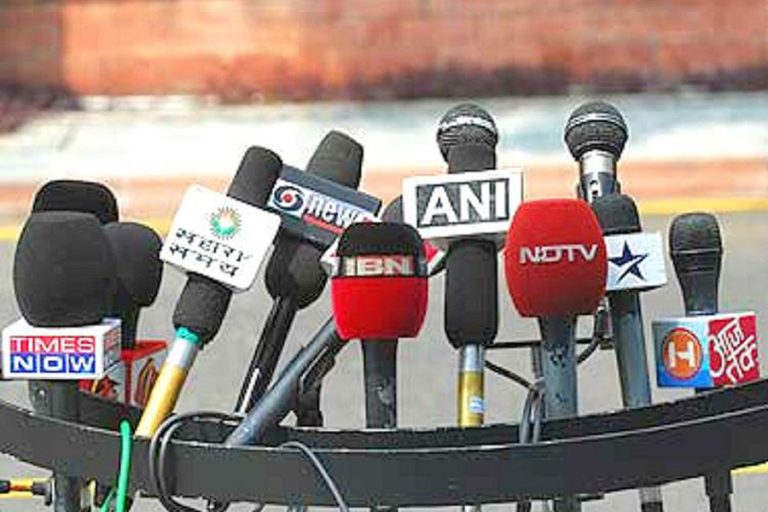India’s Media Landscape: A Breeding Ground for Disinformation Targeting Bangladesh
India’s media landscape, once celebrated for its role in the nation’s freedom struggle, has undergone a significant transformation. The rise of corporate ownership and increasing state influence have contributed to a concerning trend of misinformation, particularly regarding neighboring Bangladesh. This disinformation, disseminated through various channels, poses a serious threat to bilateral relations and regional stability. The term "Godi Media," meaning "lapdog media," has emerged to describe sections of the Indian media perceived as excessively aligned with the government’s agenda. This alignment often results in selective reporting, amplification of communal narratives, and the delegitimization of critics, all of which serve to manipulate public perception and further specific political objectives.
Exaggerated Narratives and Demonization: Fueling Mistrust and Discord
One of the most prevalent forms of misinformation involves the exaggeration of incidents concerning the persecution of Hindus in Bangladesh. Following periods of political turmoil, certain Indian media outlets have published unsubstantiated reports containing fabricated numbers and incidents. These reports often depict Bangladesh as a hostile environment for Hindus, fanning nationalist sentiments within India and contributing to regional instability. This type of reporting not only fuels distrust between the two nations but also exacerbates communal tensions within India itself. The demonization of prominent Bangladeshi figures, like Nobel laureate Dr. Muhammad Yunus, through unfounded accusations further complicates the situation. Such accusations, often lacking credible evidence, are designed to discredit these individuals and align with the narratives of political opponents.
Border Clashes and Fencing Disputes: Misinformation as a Tool for Escalation
Another focal point of misinformation revolves around border clashes and fencing disputes between India and Bangladesh. Minor incidents are frequently blown out of proportion, portrayed as deliberate provocations by Bangladeshi authorities or civilians. The portrayal of Bangladesh as a constant aggressor, with unsubstantiated claims of border violations and hostility, undermines efforts for collaborative border management and escalates tensions. Similarly, incidents of cattle smuggling or local disputes are often sensationalized and presented as organized cross-border crimes, further fueling animosity and distrust. The repeated storyline of border fencing as a necessary defense against "illegal infiltration" and "terrorism" reinforces this narrative and hinders the potential for peaceful resolution.
Manipulated Videos and Fabricated Content: Amplifying Distrust and Hostility
The spread of manipulated video clips and fabricated content adds another layer to the disinformation campaign. Videos are often edited or taken out of context to depict Bangladeshi aggression or anti-Indian sentiment. These manipulated videos, shared widely on social media platforms, contribute to increasing distrust and encouraging communal tensions within India. Although independent fact-checking organizations debunk many of these videos, their initial impact can be significant, particularly in a volatile environment where misinformation feeds xenophobia and hostility.
The Propaganda Model and Agenda-Setting Theory: Understanding Media Manipulation
The Propaganda Model, proposed by Edward S. Herman and Noam Chomsky, offers a framework for understanding how media can be manipulated to serve elite interests. This model highlights five key filters—ownership, advertising, sourcing, flak, and ideological control—that shape media content and create systematic biases. In the Indian context, corporate-owned media houses, influenced by financial dependencies and regulatory considerations, often align with government-sponsored narratives. The selective amplification of pro-government policies and the framing of neighboring countries as adversaries are examples of how these filters operate. Similarly, Agenda-Setting Theory, developed by Maxwell McCombs and Donald Shaw, explains how media influences public discourse by determining which issues are considered important. By selectively focusing on contentious issues like cross-border migration and communal violence, Indian media shapes public perception and frames Bangladesh as a perpetual threat, influencing both domestic and international relations.
Erosion of Trust and Regional Instability: The Consequences of Misinformation
The cumulative effect of these disinformation campaigns is the erosion of trust between India and Bangladesh. Sensationalized reporting transforms nuanced bilateral issues into communal or political binaries, hindering constructive dialogue and cooperation. The continuous portrayal of Bangladesh as a source of regional instability further alienates the Bangladeshi public and impedes efforts to address transboundary issues. This misinformation-driven environment fuels nationalism, exacerbates communal tensions, and undermines regional stability. To counter these negative trends, a multi-pronged approach is required, focusing on media accountability, diplomatic engagement, and public media literacy. Restoring trust in the media, promoting ethical journalism, encouraging open communication between the two nations, and empowering the public to critically assess information are crucial steps towards a more informed and harmonious future. The stakes are high, extending beyond the newsroom to encompass India’s reputation as a regional leader and the very foundations of democratic values. Addressing the misinformation crisis is not simply about improving media practices; it is about safeguarding the principles that bind nations together and ensuring a future based on fact, fairness, and mutual respect.


